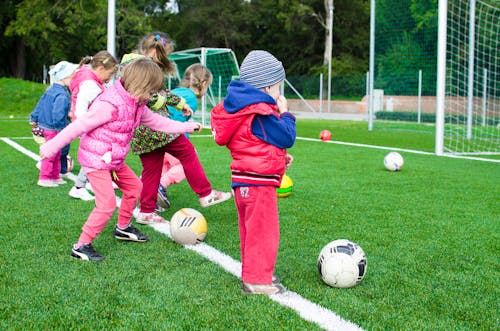Reports have been showing for years that many young people today are deficient in Vitamin D. An area that lacks research up until the mid 2000s, we are only just beginning to understand the uses of the nutrient and the complexities that can follow a lack of it. Being northerly and admittedly, extremely rainy for most of the year, ourselves and the Scandinavian countries are particularly lacking in this sunshine vitamin. One research paper says that logistically, anywhere north of Rome is going to be struggling with a lack of vitamin D. (Cashman, K.D. & Kiely, M. (2014))
We can absorb vitamin D through our skin and use our food as a source of it. So our environment – cloudy and wet – mean that we aren’t getting nearly as much natural vitamin D from the sun as we should. Even things like skin pigmentation, age, attire, working environment, physical activity and sun exposure behaviour, can also prevent or impede vitamin D synthesis.
Though research is still ongoing, there is sufficient evidence to suggest that a lack of vitamin D can be linked to skeletal fragility and weakness. Because vitamin D is designed to help us absorb calcium, if we’re lacking in it the calcium we consume simply gets excreted and not used to strengthen and build bone structure.
There is currently a noticeable lack of vitamin D in young adults and children’s diets, which is particularly concerning because those are the stages when vitamin D is most needed. This age bracket are going through accelerated skeletal growth and cannot grow properly if calcium cannot be absorbed. A 2007 report found that 1 in 2 women and 1 in 5 men over the age of 50 years will suffer an osteoporotic fracture (Lanham-New, S. A. et al. (2007)).
Although it is acknowledged that genetics do play a large role in our bone composition and strength (some 70-75%), we can still make lifestyle and nutrition choices that can influence our bone health. More crucial are those that include Calcium (Ca) and vitamin D.

‘There is growing evidence that mild vitamin D insufficiency can have a detrimental effect on bone mineral mass in adolescent females (Outila et al. 2001) and children (Lehtonen-Veromaa et al. 2002; Cheng et al. 2003). There are also data to suggest that poor vitamin D status has an impact on bone turnover markers in children’ (Lanham-New, S. A. et al. (2007)).
There are ways we can combat this deficiency. One recommended solution in children and young adults is exercise. Our bones adapt according to the level of mechanical loading they undergo - essentially, our bone density builds at weight bearing sites. Children who practised dance, football and gymnastics were seen to have higher bone mineral content than those who were less active.

Another way is to actively up our vitamin D intake. It can be absorbed endogenously (through the skin) or exogenously (through our diet). As we have established, the endogenous option isn't sufficient where we live; A study from the UK department of health in the 1990s found that from the end of October to the end of March there was insufficient sunlight to meet our needs, and that for the remaining months of the year, 60% of the effective UV radiation occurs between 11:00 am and 3:00 pm.
So if our best option of incorporation is though our diets, how do we begin? The NHS recommend that you should take 10 micrograms (400 IU) of vitamin D a day between October and early March to keep your bones and muscles healthy. Great sources include:
Oily fish: This is referring to fish like salmon, sardines, herring and mackerel.
Red Meat: Lamb, beef and veal.
Fortified foods: Some fat spreads and breakfast cereals.
For more information on supplements and dosage, see here. Always follow your doctor's advice about changing up your nutritional intake.
Sources
(Cashman, K.D. & Kiely, M. (2014) Recommended dietary intakes for vitamin D: where do they come from, what do they achieve and how can we meet them? J Hum Nutr Diet. 27, 434– 442 doi: 10.1111/jhn.12226)
(Lanham-New, S. A., et al. “Importance of Vitamin D, Calcium and Exercise to Bone Health with Specific Reference to Children and Adolescents.” Nutrition Bulletin, vol. 32, no. 4, Dec. 2007, pp. 364–377. EBSCOhost, doi:10.1111/j.1467-3010.2007.00670.x.)









